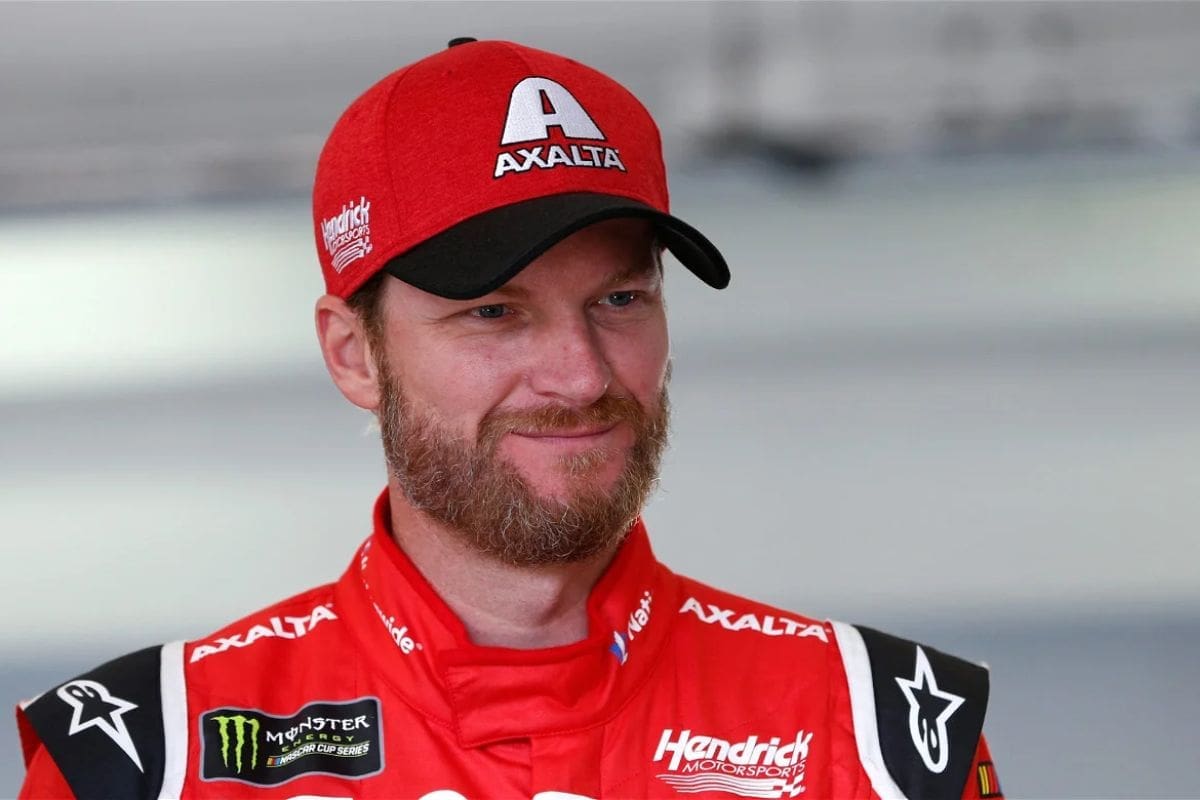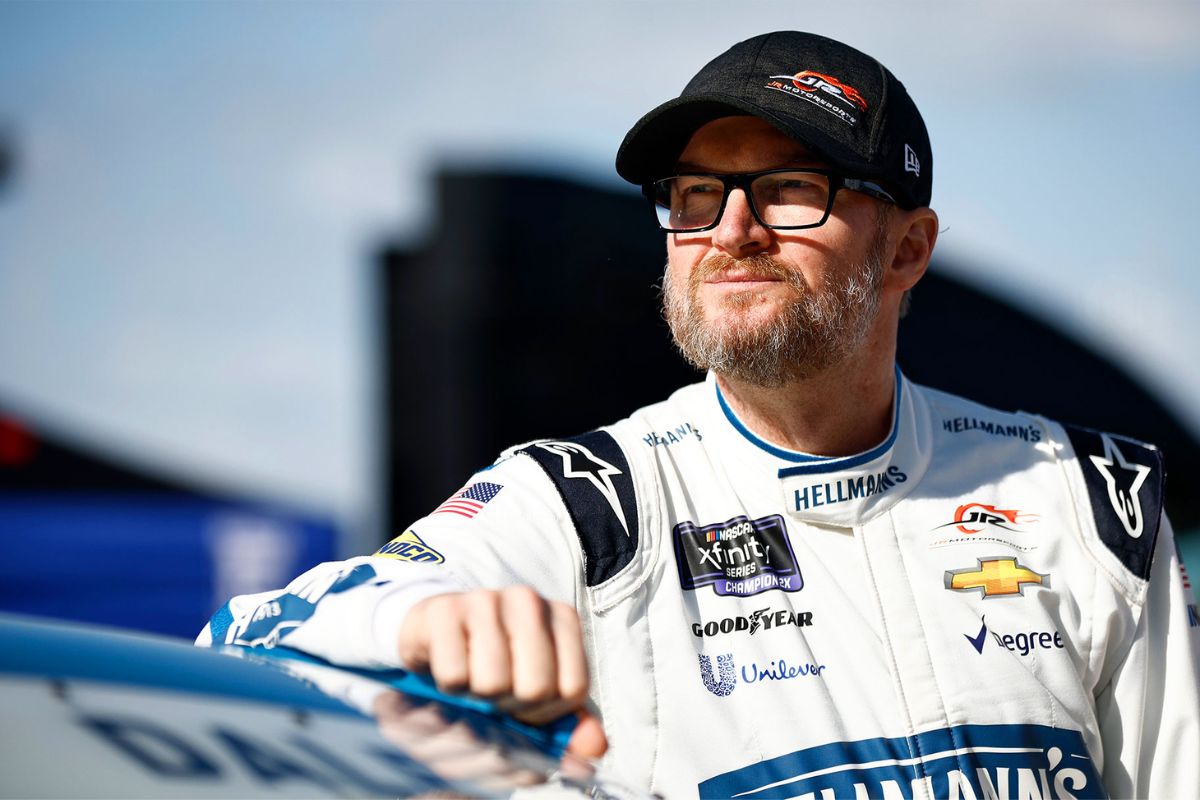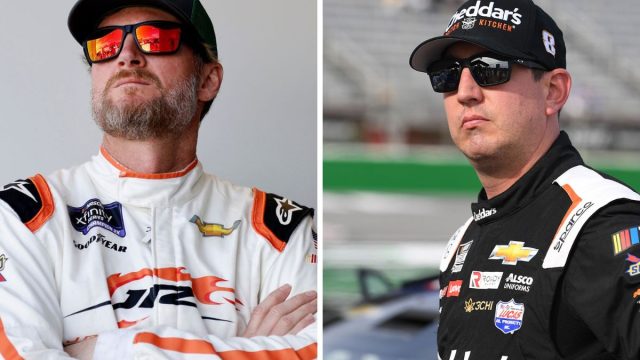Dale Jr. Rages Over Kyle Busch Incident: The fervent reaction from Dale Earnhardt Jr. to NASCAR’s controversial decision to issue a caution for a minor incident involving Kyle Busch in Toyota Owners 400 at Richmond has reignited discussions on the sport’s officiating standards. This incident not only showed the delicate balance between safety and competitive fairness but also brought to light the broader implications of such calls on the race’s integrity and outcome. Earnhardt Jr.’s critique, rooted in a desire to safeguard the sport’s competitive essence, invites a closer examination of NASCAR’s decision-making process. This moment acts as a catalyst for a broader conversation on whether the current officiating framework aligns with the values of transparency and consistency, essential for maintaining the trust of drivers and fans.
Key Takeaways
- Dale Earnhardt Jr. criticized NASCAR’s decision to caution for Kyle Busch’s minor scrape, questioning the impact on the race’s integrity.
- He emphasized the need for maintaining the competitive spirit of the race, suggesting the caution was unnecessary.
- NASCAR’s Elton Sawyer explained the caution, but skepticism from Dale Jr. and fans highlighted debates on officiating transparency.
- The incident sparked discussions on NASCAR’s consistency in rule enforcement and the perception of controversial calls.
- Fans and drivers, including Ryan Blaney, expressed frustration over the perceived disruption caused by the caution in the competitive racing sport.
NASCAR’s Controversial Calls at Richmond
After the Richmond race wrapped up, NASCAR found itself in the hot seat with fans, drivers, and analysts. Many fans were convinced the race was smooth sailing until NASCAR stirred things up. Several controversial decisions, notably the one involving Denny Hamlin’s restart, didn’t sit well with anyone. And when NASCAR threw a caution for Kyle Busch’s minor incident, it only added more frustration. The drivers, like Ryan Blaney, were visibly annoyed, and it threw off others, including Kyle Larson. Even Dale Earnhardt Jr. didn’t mince words on his podcast, expressing his irritation over what he saw as an unnecessary caution.
Caution periods have a significant impact on race strategy and can alter the competitive balance of an event. In this instance, the caution was deemed unnecessary by a considerable portion of the NASCAR community, suggesting an overzealous or inconsistent application of the rules. This incident not only frustrated fans but also affected competitors, with drivers like Ryan Blaney expressing visible frustration and impacting the race strategy of others, including Kyle Larson.
Analyzing these controversial calls requires a distinct understanding of NASCAR’s regulatory environment. It’s crucial to consider the balance between ensuring safety, maintaining sporting fairness, and delivering an engaging spectacle for fans. The reactions from various stakeholders highlight the complexity of decision-making in sporting events and show the challenges that NASCAR faces in consistently applying its rulebook. Moving forward, NASCAR’s response to this scrutiny will be closely watched, as it seeks to refine its decision-making processes and reinforce the sport’s credibility.

Dale Earnhardt Jr.’s Reaction
Expressing his dissatisfaction, Dale Earnhardt Jr. criticized NASCAR’s decision to throw a caution for Kyle Busch’s minor incident, arguing that it unnecessarily disrupted an otherwise engaging race. Earnhardt Jr. was particularly engrossed in the race’s dynamics through the first 100 laps, noting the intrigue added by drivers’ strategies and the shift to wet weather tires. This set the stage for an anticipatory buildup towards the race’s climax, which was abruptly interrupted by the contentious caution during Stage 3.
Elton Sawyer attempted to ease tensions by suggesting that Kyle might have been experiencing tire or brake issues, but Dale Jr. wasn’t convinced. He didn’t hold back, expressing his disbelief at how the caution seemed to come out of nowhere. Dale Jr. was unshakeable in his stance, suggesting that NASCAR’s decision left everyone scratching their heads.
Earnhardt’s critique invites a detailed examination of NASCAR’s decision-making processes concerning cautions. It raises questions about the balance between ensuring safety and maintaining the sport’s competitive spirit. His observations about the race’s initial dynamics show the complexity of race strategy and the pivotal role that real-time decisions play in influencing the outcome.
“Later on, Kyle’s back in the mix, cruising around in 18th or 19th place. And I’m thinking, his car must be fine if he’s making moves like that. It just got under my skin even more that they decided to throw that caution when his car was clearly not out of the race. Like, the car was barely scratched, and he drove it right back up there.” – (Dale Jr.)
Ryan Blaney’s Discontent
Ryan Blaney’s frustration during the race was noticeable, particularly highlighted by his intense reaction to the caution called for Kyle Busch’s minor incident. His journey through the event was marked by a series of challenges and his response to these obstacles provides insight into the complexities of competitive racing within NASCAR. Here are some key points that show Blaney’s discontent:
- Early Struggles: Blaney’s race commenced with promise as he quickly led from 12th to 10th position. However, his performance was soon ruined by difficulties with his car, resulting in a disappointing finish in the first two stages at 21st and 26th place respectively.
- Overtaking Frustrations: During the third stage, despite his efforts to gain ground, Blaney found himself hindered by cars running two wide ahead of him. His expressed frustration over the radio indicates the tactical difficulties faced by drivers in maneuvering and strategizing passes in tightly packed fields.
- Controversial Caution Reaction: The caution thrown for Kyle Busch’s minor brush with the wall, while Busch’s car remained virtually unescaped, was a pivotal moment for Blaney. His frustrated outburst over the decision highlights the tension involved in NASCAR racing, where every call can have a substantial impact on a racer’s outcome.
- Measured Post-Race Comments: Despite his heated in-race comments, Blaney’s choice to temper his words during the post-race interview suggests a level of professionalism and perhaps a recognition of the complexity of officiating in high-speed motorsports.
NASCAR’s Response and Fan Reactions
In the aftermath of the controversial caution at Richmond, NASCAR’s response, coupled with varied fan reactions, has sparked a significant debate regarding the consistency and transparency of race officiating. Elton Sawyer’s attempt to explain the situation by suggesting potential issues with Kyle Busch’s car, such as a tire going down or brake trouble, was met with skepticism, especially from Dale Jr. This incident has not only aggravated tensions between drivers but has also led to a broader discourse among the NASCAR community about the integrity of the officiating process.
The incident has undeniably affected the perception of NASCAR’s officiating among fans and drivers. The call for greater transparency and consistency is evident, as stakeholders seek assurance that competitions are fair and decisions are made with integrity. This debate shows the delicate balance NASCAR must maintain in enforcing rules while fostering a competitive and just racing environment.

News in Brief
The incident involving Kyle Busch at Richmond and the subsequent reaction from Dale Earnhardt Jr. show the complex dynamics of rule enforcement within NASCAR. This episode not only highlights the challenges in maintaining competitive integrity but also reflects broader concerns over transparency and consistency in officiating.
As stakeholders, including drivers and fans, voice their discontent, it becomes evident that the credibility of NASCAR’s decision-making processes is at stake. This situation calls for a critical evaluation and possible reformation of the governing body’s approach to safeguard the sport’s integrity and fairness.
Our Reader’s Queries
Q: Do Kyle Busch and Dale Jr. get along?
A: Kyle and I had some on-track history, but now we’re friends. Yet, our fans struggle with us being together. It dates back to Richmond in 2008, when we battled for the lead.
Q: Who picked up Kyle Busch?
A: Kyle Busch and Richard Childress Racing have secured sponsorship from Rebel Bourbon for the 2024 NASCAR Cup Series season, as announced on January 9th. Rebel will back Busch’s No. 8 car for several races over the 2024 and 2025 seasons.
Q: Who won the Daytona 500 when Earnhardt died?
A: The 2001 Daytona race, which tragically claimed Earnhardt’s life, was won by Michael Waltrip, driving for Dale Earnhardt Inc. (DEI). Earnhardt’s son, Dale Jr., also with DEI at the time, finished second in the race.
Also Read: NASCAR Roasts Dale Jr: Social Media Showdown Unfolds
